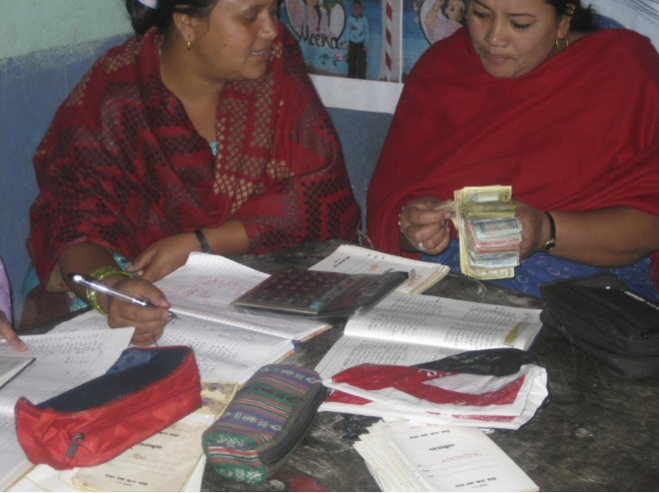Project Year
2011
Region(s)
South Asia
Country(ies)
Nepal
Project Description
This is a study of the moral communities and practices generated around the use of “new wealth” in an untouchable caste neighborhood in Kathmandu Valley, Nepal. There are both a historical and contemporary social components to the study. I am interested in how the terms of caste, class, and gender inform, and have been affected by, the way local economies of value have intersected with economic liberalization policies and practices since the mid-twentieth century. Economic liberalization has made its mark in two broad categories. On the one hand, broader access to consumer products and practices; on the other hand, the proliferation of development programs and practices in view of Nepal’s status as a “least developed country.” How does a moral economy of pleasure interact with the political and social exigencies of a moral economy of need? How do these encounters with global modernity adjust and how are they in turn adjusted by alternative logics of economic rationality? I ask these questions in terms of how access to markedly new wealth are placed in exchange and circulation by women in an untouchable caste neighborhood through their initiation and participation in a series of formal and informal, self-initiated and introduced credit and savings programs. What are the social and moral preconceptions about caste, class, and gender that underwrite the availability and use of certain credit and savings options? How do ideas about social, ethical and economic community, risk, and trust inform and become effective of these transactions? What types of consumer practices and desires do these exchanges give rise to?
Researcher(s)
Sepideh Bajracharya
About the Researcher(s)
 Sepideh Bajracharya received her PhD from Harvard in Social Anthropology. She is currently a post-doctoral
researcher with the Michigan Society of Fellows and an Assistant Professor, Socio-cultural
Anthropology.
Sepideh Bajracharya received her PhD from Harvard in Social Anthropology. She is currently a post-doctoral
researcher with the Michigan Society of Fellows and an Assistant Professor, Socio-cultural
Anthropology.
Synopsis of Research Results
 This is a study of the social implications linked to dhukuti—a transaction and phenomenon associated with the informal and peripheral economy of
urban, late postcolonial societies. Research took place between March 2011 and 2012,
among a community of “untouchable-sweeper,” or Dyahla caste women living in Patan city—one of three municipalities constituting the Kathmandu
Valley in Nepal. Research findings suggest that the moral and social value of dhukuti transactions and communities hinge on the simultaneous and seamless intersection of neoliberal economies of “need” and “pleasure.”
This is a study of the social implications linked to dhukuti—a transaction and phenomenon associated with the informal and peripheral economy of
urban, late postcolonial societies. Research took place between March 2011 and 2012,
among a community of “untouchable-sweeper,” or Dyahla caste women living in Patan city—one of three municipalities constituting the Kathmandu
Valley in Nepal. Research findings suggest that the moral and social value of dhukuti transactions and communities hinge on the simultaneous and seamless intersection of neoliberal economies of “need” and “pleasure.”
Dhukuti is an urban Nepali version of what is commonly called a ROSCA: a rotating indigenous and/or grassroots savings and credit association linked to the informal financial sector in postcolonial communities. Dhukutis consist of select groups of people who agree to contribute a monthly sum that is subsequently acquired by each member of the collective. Dhukuti translates as “treasury” in the Nepali language. It refers to the place and/or container where cash and durables such as gold and jewelry are stored. It often conjures the image of a “safe”—a heavily padlocked box hidden in the intimate, domestic chambers of a home. But dhukuti also refers to an economic transaction and social phenomenon, which in keeping with its literal reference, designates a “safe” space and material exchange of capital that takes place beyond the purview of formal arrangement. And yet, there are critical aspects of this exchange that contradict its literal associations: unlike the safe-box, locked and accessible only to the most intimate members of a family, dhukuti entertains a mobile and temporary transaction that abides the accumulation and circulation of large sums of cash outside one’s home, among those to whom one is not related as kin.
 I asked them what they meant by “dhukuti.” “Dhukuti is how we acquire the things the heart thirsts” (man le chaso gareko chees), replied one women. She said thirty years ago, I would have encountered single-floored
houses that lacked doors, windows, electricity, and TVs. Now, she said, the houses
were multi-tiered, built with oven kilned-brick, cement and corrugated tin. Now, she
said, everyone owned a TV. All this, she claimed, was dhukuti’s “doing.” Though dhukuti had been around for a long time, she said they had only begun playing it “serious”
recently. Recently recalled the period following the mid-1980s when this neighborhood, and a generation
of women between fifteen and sixty years of age were recruited into what was called
the “German Project”—a bilateral agreement between the German and Nepali government
to hire Dyahla women as salaried and pensioned city sweepers. The German Project phased out after
two years, but the women retained their jobs, and were increasingly targeted by a
slew of new local and international development aid projects.
I asked them what they meant by “dhukuti.” “Dhukuti is how we acquire the things the heart thirsts” (man le chaso gareko chees), replied one women. She said thirty years ago, I would have encountered single-floored
houses that lacked doors, windows, electricity, and TVs. Now, she said, the houses
were multi-tiered, built with oven kilned-brick, cement and corrugated tin. Now, she
said, everyone owned a TV. All this, she claimed, was dhukuti’s “doing.” Though dhukuti had been around for a long time, she said they had only begun playing it “serious”
recently. Recently recalled the period following the mid-1980s when this neighborhood, and a generation
of women between fifteen and sixty years of age were recruited into what was called
the “German Project”—a bilateral agreement between the German and Nepali government
to hire Dyahla women as salaried and pensioned city sweepers. The German Project phased out after
two years, but the women retained their jobs, and were increasingly targeted by a
slew of new local and international development aid projects.
Post-1980 economic liberalization is often associated with one of two emergent economies—what I call “an economy of need,” and “an economy of pleasure.” An economy of need refers to discourses, institutions, practices, bureaucracies and identities associated with the aid industry. A pleasure economy concerns an increased access, availability, and desire for consumer products, services, and practices. Studies tend to privilege one against the other. Either the focus is on the implications of a poverty-economy linked to the dysfunctional state, and the local, tradition-bound gender and caste-confined identities symptomatic of South Asia. Or the debate revolves around the conditions of aspiring and prevailing class identities and mobilities productive of new consumer desires and practices. The literature on ROSCAS exemplifies this trend. Either they index insurance/saving scheme used by the poor to manage their poverty; an alternative banking option that compensates for the lack of reliable access to formal banking. Or they are invoked as a register of class relations—a way to aspire to and accumulate large sums of money in order to consume or invest in new consumer products and services that evade the conditions of formal banking, and gender/caste identifications.

The results of this study propose a different perspective. They suggest that dhukuti transactions did not privilege the terms of need over consumerism, caste and/or gender, in lieu of class ascriptions. It was a practice that lay simultaneously and seamlessly at the nexus of imagined and manifest expressions of need and desire; a phenomenon confirming of inherited and changing relations of caste, gender, and class. Interest in the social implications of transactions such as dhukuti, which represent the informal realm of financial exchange in the postcolonial world, must therefore heed the moral vicissitudes of such seamless simultaneities. Why and how is it, in other words, that what appears a paradox—how can the urban poor entertain need and pleasure, the informal and formal, private and public, immaterial and material economy—is hardly conceived so by those involved? How and why does a “seamless simultaneity” describe the condition of dhukuti’s thriving?
Dyahla women played dhukuti on a “rotation” basis. This was different from dhukutis associated with higher-caste/class dhukutis that were customarily played by a “lottery” or “bidding” system. While the former kept to a status quo, with each person on a list taking turns acquiring the monthly collection, the latter involved an element of gamble, loss and profit. There was nothing to be gained or lost in rotation playing; nobody expected to make a profit. Both Dyahla women and outsiders associated this conservatism as being peculiar to this community and this kind of playing, referring to this method of playing as “dhyahla dhukuti” (“untouchable sweeper-caste” dhukuti). Dyahla dhukutis were typified as involving many participants (60-100), and long stretches of time (2 to 5 years). They were notably exclusive to this caste, and involved “eventless” transactions—they did not take place in a “third location” such as a restaurant, or the organizer’s home as was the case with higher-class/caste dhukutis. Dyahla dhukutis transactions were either embedded into events such as the credit/savings meeting, or they adhered the rhythms and routines of everyday life, with transactions taking place in passing, or random home visits.
When I asked why they didn’t make “an event” of dhukuti, Dyahla women told me they didn’t have time or need: they worked all day, and it was too difficult to gather and feed that many people. When I asked why they didn’t play by “lottery” or “bidding,” many women said they had “too much love” for their money; they worked too hard to risk losing their incomes. They referred to dhukuti as “a place” to “put” their salaries—a secure “location” beyond the “reaching hands” of drunk husbands, frivolous children, and lecherous relatives. Circulation was this place and the point: their playing rested on knowing that their money was somewhere, and that it would return to them at a known time, and in a known amount. Dyahla dhukuti was thus confirming of prevailing caste and gender hierarchies. “Too much love” for money indicated these women, their labor, and the moral/social valence of their financial transactions, as lower in grade than that of other class, caste, and gendered contingents. It classified them as people who could not afford to gamble, profit, or lose money without emotional attachment.
In accord with studies of ROSCAS, dhukuti’s popularity relied on its informal associations: the flexible, accommodating, and immediate collection of large sums of money that sidelined formal banking protocol. But contrary to the oft-made argument subsequent to this claim, dhukuti did not engage the informal economy at the expense of the formal, however corrupt or dysfunctional it appeared. Dyahla women easily and actively maneuvered cash in and out of formal and informal structures of financial exchange. In fact they traced their increased confidence and savvy with regard to formal financial investments to dhukuti playing. In other words, dhukuti was one of multiple transactions—formal and informal—that described the financial cartography of these women, and this community.
Studies tend to depict the social and moral implications of ROSCAS, and the realms of informal finance they register either in terms of need or pleasure; traditional caste and gender or emerging and aspiring class identifications. This study suggests that the moral and social valence of ROSCAS are contingent on the seamless simultaneity of need and pleasure, inherited and changing identifications of caste, gender, and class, that are engaging of formal and informal realms of financial transaction.



